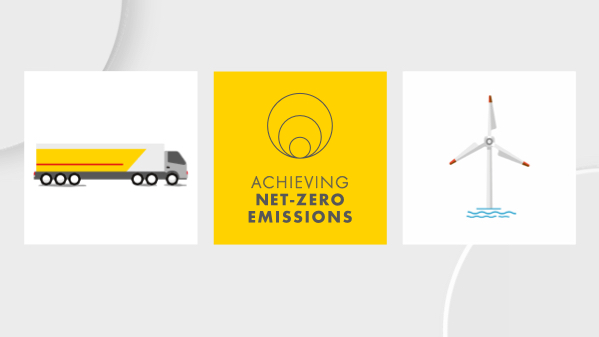Delivering our climate targets
Net carbon intensity
Shell’s net carbon intensity (NCI) provides an annual measure of the life-cycle emissions intensity of the portfolio of energy products sold. It is the average intensity, weighted by sales volume, of the energy products sold by Shell. It is tracked, measured and reported using the Net Carbon Footprint (NCF) methodology.
We express our net carbon intensity as the grams of CO2 equivalent per megajoule (gCO2e/MJ) produced for each unit of energy delivered to, and used by, a consumer.
Shell’s net carbon intensity in 2021 was 77 gCO2e/MJ. Although this is a 2.7% increase from the previous year, it represents a 2.5% reduction from the 2016 reference year, which means that we achieved our first short-term target of a 2-3% reduction in NCI by the end of 2021.
The increase in Shell’s net carbon intensity in 2021 is largely due to the introduction of an improved approach for the estimation of the emissions intensity of power sold by Shell. The new approach is based on categorising power sales as certified renewable; own generation or power purchase agreement; or power purchased from the grid. Intensities are then assigned to each power sales category allowing a better estimation of the overall intensity of power sold by Shell.
We have received third-party limited assurance on our carbon intensity, measured and reported using the Net Carbon Footprint methodology, for the period 2016 to 2021. Limited assurance means nothing has come to the auditor’s attention that would indicate that the greenhouse gas data and information as presented in the Greenhouse Gas Statement were not materially correct.
Read more about our Net Carbon Footprint methodology at www.shell.com/ncf.
Net carbon intensity [A] [B]
gCO2e/MJ
[B] Acquisitions and divestments are included in the actual performance tracking with the target and reference year unchanged. Note that acquisitions and divestments could have a material impact on meeting the targets.
Absolute emissions reduction performance
In 2021, our total combined Scope 1 and 2 absolute greenhouse gas emissions (from assets and activities under our operational control) were 68 million tonnes on a CO₂ equivalent basis, a 4% reduction compared with 2020, and an 18% reduction compared with 2016, the base year. Our Scope 3 emissions from energy products included in our net carbon intensity were 1,299 million tonnes CO₂e.
Scope 1 and 2 emissions under operational control
million tonnes CO2e
[B] GHG emissions are calculated using Global Warming Potential factors from the IPCC’s Fourth Assessment Report.
[C] GHG emissions in this chart do not include carbon credits.
[D] We have restated our 2020 Scope 2 emissions from 9 to 8 million tonnes CO2e following a correction of an efficiency factor for steam at one of our assets and a revision to how internal energy transfers of steam and electricity were accounted for at several of our assets to remove double-counting between Scopes 1 and 2.
[E] We have estimated the overall uncertainty for our Scope 2 emissions to be around 6% for 2021.









